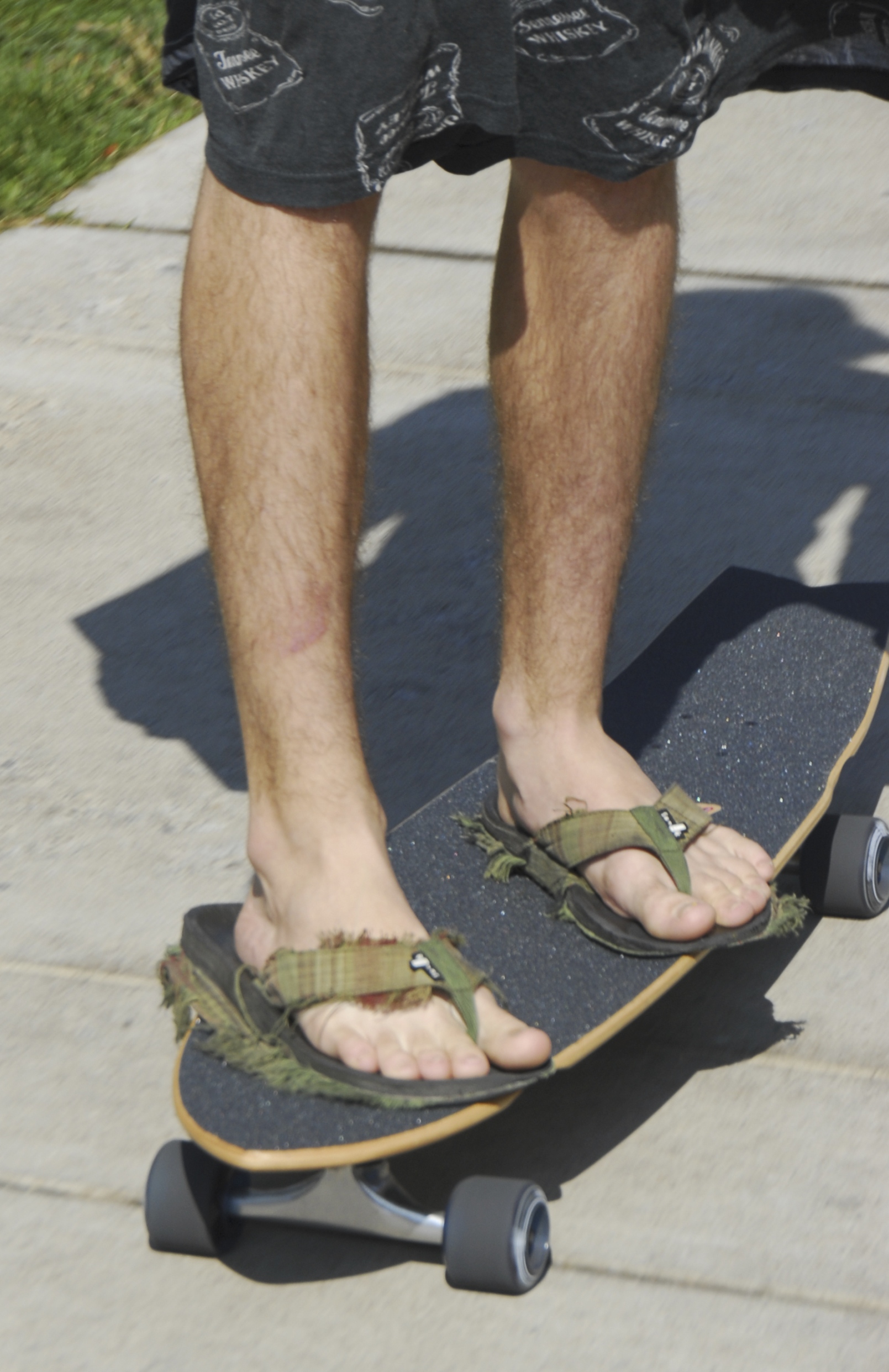Not all students see eye to eye about longboards
Longboarding is gaining popularity among many campus commuters. However, not everyone who shares the crowded sidewalks are thrilled about their presence.
Some students have complained that some longboarders are inconsiderate in their attempts to weave in and out of people walking to class. Other students have expressed concerns beyond annoyance and feel longboarders are also dangerous.
Blake Ure, senior majoring in American studies, said he’s come close to colliding with longboarders numerous times over his career at USU, and on one occasion was forced into a tree when a longboarder overcorrected his turn and slammed into him.
“I think longboarders just need to be conscientious. I don’t care that they ride their boards but a little, ‘Hey, I’m coming through’ would be appreciated,” he said.
But Ure said a warning of this nature is never granted, and he is constantly seeing others who come uncomfortably close to being hit.
However, some students say this is an unfair expectation of longboarders and that for the majority of the time people do get off their boards when entering a crowded area.
Todd Vincent, who often uses longboarding to travel around campus, said he rarely rides through crowds and only boards in areas where people are more spread apart.
“If there is excessive traffic, weaving in and out of people might be a hazard and when I’m longboarding I try to avoid that,” he said.
Vincent also believes the responsibility of creating a safe commuting environment does not fall solely on longboarders, but on everyone sharing the sidewalks.
“As a pedestrian I know that if someone is longboarding behind me I’ll be fine unless I stop, freak out and try to jump to the side. If I were to do that, I’d get hit,” he said.
More often than not, collisions occur when a pedestrian tries to juke out a longboarder at the same time the boarder is trying to go around them. This leads to two unhappy commuters sprawled out in the middle of a side walk, Vincent said.
Do nothing and hoping the longboarder does in-fact avoid you is something Ure said goes against instinct. It’s natural for a person to want to get out of the way to prevent a collision.
And Ure does not feel this problem is exclusive to longboards. Commuters on bikes and scooters perform the same unsafe practices of weaving through crowds, and often they come just as close to losing control and running people off the side walks.
“I just feel like we need a designated lane for all of them, because the sidewalks are for walking,” Ure said.
But according to USU police Sgt. Joe Huish, no official incidents of pedestrians being hit by longboarders has been reported this year that stands out in his mind.
“We’ve had complaints from pedestrians who’ve had near misses but I don’t think we’ve had a single report this year of someone being injured,” he said.
This does not mean that accidents do not occur between pedestrians and longboarders, he said. It only means people are not reporting when they are involved in an accident, or the injuries suffered were not merit for police intervention.
And Vincent said the cause of the few accidents that have occurred is due to the inexperience of the rider and their inability to properly control a board.
“Someone who is new into longboarding should not be in an area where there are a lot people. But if a boarder has been doing it for a long time, it’s his prerogative,” Vincent said.
Fellow longboarder, Jeff Dickman, offers an alternative which bypasses most pedestrians entirely.
“I always try to go through the back roads and parking lots when I’m going to class. You can make it almost the entire way if you know where you’re going,” said Dickman, an undeclared freshman at USU.
This benefits both the longboarder, who will not have to spend the majority of their time dodging pedestrians, and fellow students who will not have to worry about getting mowed over by a monstrous skateboard.
Dickman, who has used longboarding as a form of transportation for more than two years, said it is the best way for him to make it to class quickly while still being able to be outside, both of which are heavy benefits of his longboarding lifestyle.
But concerned pedestrians like Ure are not calling for all longboards, scooters, and bikes to be banned from campus.
“I’m glad people are using alternate forms of transportation to get around, and with the weather being nice I don’t blame them,” he said. “I just think people need to give a warning when they’re going through or if there is a big mass of people to just get off and walk.”
–greg.boyles@aggiemail.usu.edu

